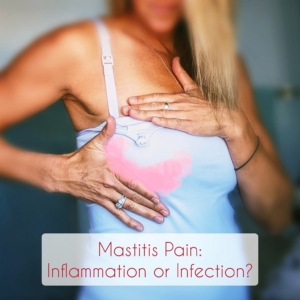Physical Therapy for Mastitis
By Sheri DeSchaaf, DPT
Mastitis SUCKS. Did you know qualified PTs can help with mastitis and blocked ducts?
Our PTs at SHEFitPT are trained in a new (to the U.S.) evidence-based hands-on treatment protocol for used for years by postnatal physical therapists in Canada, Australia, and the UK.
Treatment includes a combination of specialized therapeutic breast massage alternating with milk expression to clear the blockage, along with therapeutic ultrasound to reduce pain and inflammation, kinesiotaping to relieve pressure and enhance circulation in the breast, and cold therapy. As PTs, of COURSE we will also be providing you with plenty of education on how to breastfeed more comfortably for your and baby (posture, ergonomics, etc.), appropriate bra fit to support those milk makers, and assessing you as a WHOLE PERSON, not just one inflamed breast. (yes, we’ll probably ask you about your pelvic floor, core, pain, and other functional concerns. 😉 )
Recent research indicates that pain related to blocked ducts and mastitis are most often related to inflammation in the breast, which causes swelling around the duct, blocking it from the OUTSIDE, vs.a plug of solidified milk on the inside. So while traditional techniques of massage toward the nipple are appropriate for milk expression, they are often ineffective in reducing inflammation to really relieve the blockage. (Read on for more effective massage strategies.) There are a variety of causes for that inflammation, including milk stasis (the milk is not flowing well from that duct), compression from clothing, poor infant latch or suck, pump fit, changes in feeding patterns, and infection to name a few.
Inflammation turns into pain, heat, and swelling, which further compresses the duct and discourages breastfeeding, pumping or really stimulation of any kind. When milk stays in the duct, more inflammatory triggers are released and the cascade continues, often progressing to fever and other signs that indicate possible infection. But it is impossible to know whether your mastitis is a result of infection or other factors, since there is no known test for infections in the breast. If you go see your OB, they will tell you to wait it out and self-treat for 24 hrs, then come back and get antibiotics if your fever and other symptoms aren’t improving.
During that 24 hrs, most mamas suffer through, feeding or pumping every hour, taking hot showers while aggressively massaging the breasts in awkward positions, packing their bras with cold cabbage leaves, and desperately trying to get rid of the pain to avoid the unwanted antibiotics. If you are a well-informed or experienced mother, you would contact your lactation consultatant by this stage to get a thorough assessment of baby’s latch and suck to make sure your little precious is not contributing to the problem. A qualified LC can also advise you on the best feeding/pumping schedule, pump fit and usage, and help you navigate the best feeding positions for baby to clear the milk for you.
Our role as PTs is to reduce the pain and inflammation fast, clearing the ducts so you don’t spiral into full-on mastitis that will trigger unnecessary antibiotics. We can also help you decide when those antibiotics might actually be necessary, because you have truly treated the inflammation and it is not going away, indicating an infection is likely. We support your IBCLC’s work by helping you with posture and ergonomics for breastfeeding and pumping, reducing back, neck or shoulder pain that might be inhibiting you, and making sure you can sit, stand or lie down comfortably while you feed your child or pump. We use all the tools at our disposal – massage, myofascial release, ultrasound, and k-tape – to send you home feeling better and empowered to do what you need to at home to continue to improve – with a concrete plan for how to get OUT of pain.
The specific style of therapeutic breast massage we employ is a modification of lymphatic massage, gently flushing excess fluid and inflammatory substances away from the nipple toward the lumph nodes at the axilla and clavicle, alternating with manual expression to clear the duct as it opens up. Therapeutic Ultrasound may be applied before, after, or during this massage regimen to enhance the anti-inflammatory efficacy. Once we have effectively reduced the inflammation to a satisfactory degree, we apply k-tape in a pattern around the breast to improve circulation and minimize return of excess fluid. We recommend following this treatment with application of cold (cabbage leaves or otherwise) for 10-15 minutes at a time.
This treatment combination has been shown to reduce inflammation and relieve blockage within 1-3 sessions, and it is recommended you do those sessions within 3-5 days. Of course we recommend you also consult with your lactation consultant to ensure there are no hidden factors that may cause mastitis to be a recurrent theme in your lactation journey.
Have an inflammed breast and sick of struggling to self-treat? Let us help!
Book now via our scheduling site, or contact the office at 858-247-2660. You can also send us a message via the contact page.
(Please be aware that Ultrasound is only available at the Pacific Beach Location at this time.)


